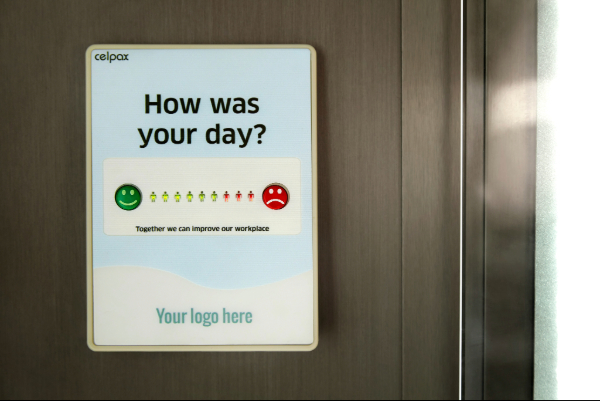Summary
In this article you will learn:
- Why a structured onboarding process is strategic and essential for reducing new hire turnover (up to 82% employee retention improvement).
- The 4 C’s Framework for holistic onboarding: Compliance, Clarification, Culture, and Connection.
- Actionable best practices for small, budget-conscious businesses across pre-boarding, Week One, and ongoing support.
- Specific tips for successfully integrating remote and hybrid new hires.
- A 6-step action plan to audit your current process, set goals, create checklists, and measure success.
An effective onboarding strategy is much more than simply handing over a contract and showing the new hire to their desk. When done well, it accelerates performance, embeds new employees in your culture, and dramatically improves retention, all of which matter hugely for company performance, especially for small businesses with limited resources.
In this blog we’ll walk through key best practices, supported by current trends, and finish with actionable steps you can implement right away.
Why onboarding matters - and why businesses can’t afford to skip it
- According to recent data, one in three new hires leave their job within the first 90 days.
- Organisations with formal, structured onboarding programmes report employee retention improvements of up to 82%.
- A Gallup-report found that employees who experienced a “great” onboarding process were 2.6 × more likely to be extremely satisfied at work.
- Only around 12% of employees believe their organisation has a good onboarding process
In an economy where each employee really counts and the cost of turnover can be high, investing in onboarding is not optional - it’s strategic.
The 4 C’s of Onboarding: A Framework for Small Businesses
A useful framework to structure onboarding is the “4 C’s”: Compliance, Clarification, Culture, and Connection.
1. Compliance
Ensure all the legal, administrative, and policy requirements are handled smoothly.
- Pre-onboarding paperwork (patrol forms, tax forms, contracts, ID checks) should ideally be completed before day one.
- Prepping welcome packs or checklists helps reduce errors and confusion.
- Tip: Send a “Welcome” email ahead of time with instructions for first day access, parking/location information (or login details if remote), and any required forms.
2. Clarification
New hires need to understand their role, goals, and how they fit into the organisation. Without clarity, engagement and productivity will suffer.
- Only around 29% of new hires report feeling fully supported and prepared on day one.
- Set clear expectations: role responsibilities, performance goals for 30/60/90 days, key stakeholders and deliverables.
- Create a simple “First 90 Days” roadmap and share it with the new hire and their manager.
3. Culture
This is about helping the newcomer understand the company’s values, norms, unwritten rules, and “how we do things here”.
- Employees who feel culturally aligned are far more likely to stay with a business long-term.
- Consider assigning a culture-buddy or peer mentor who can answer “what happens around here” type questions.
- Tip: Include a short session (virtual or in person) on company history, values, and introduce the team with informal “meet and greet”.
4. Connection
Social integration is crucial - new hires need to build relationships and feel part of the team.
- Data shows that when new hires feel welcomed and connected in their first week, productivity and employee retention improves
- You might schedule a team lunch, set up a one-to-one with each key team member, or include the new hire in a small project early on to build involvement.
Best Practices for Small Businesses: What to Focus On
Here are more detailed practices, with a small-business lens (i.e. lower budget, fewer resources) and actionable concrete tips.
Pre-boarding
- Send welcome materials before day one: overview of the company, first-day schedule, login/access instructions. This helps new hires feel prepared and valued.
- Prepare workstation access (badge, laptop, logins) in advance. According to recent data, 43% of new hires waited more than a week for workstation/tool access - this delays productivity and can cause frustration.
- Tip: Use a simple checklist for IT, facilities, HR to ensure nothing gets missed.
Week One
- Provide a structured first-day agenda: introductions, overview of business, role overview, team lunch etc.
- Deliver role-specific training thoroughly. Research shows many onboarding strategies are not long enough – they often last less than a month, but having an onboarding plan that lasts for 90 days, ensures the new team member has an opportunity to reflect on progress and any gaps in progress with their line manager.
- Tip: Assign a “buddy” from day one who can be an informal go-to.
Role Clarity & Early Milestones
- Set milestones for 30, 60, 90 days: e.g. “By end of month one you will have completed X and met Y contacts”.
- Research shows that only 40% of companies set milestones for new hires.
- Tip: Use a shared Google Sheet or internal wiki page to track these with the new hire and their manager.
Culture Immersion
- Schedule an informal coffee meeting, team social, or virtual meet-up (if remote/hybrid).
- Share your business story: why you started, what you stand for, what success looks like. This helps build ownership.
- Tip: Create a one-page “culture snapshot” to hand to new hires.
On-going Support and Feedback
- Plan check-ins at 1 week, 1 month, 3 months. Data shows that early check-ins increase retention.
- Encourage managers to ask: “What’s working? What’s confusing? Wha’s missing?”
- Provide training/resources: especially if a role involves multiple systems, businesses can benefit from micro-training modules, peer learning, or external online tutorials.
Measure & Iterate
- Businesses can track simple metrics: e.g., new hire 90-day retention, time-to-productivity (when they become “fully onboarded”), new hire satisfaction.
- Use surveys after 30 & 90 days to ask how the onboarding process felt. Only 12% of employees rate their onboarding experience as “great” – this demonstrates a big improvement opportunity, and a way to set your company apart from the competition.
- Tip: After each onboarding cycle, hold a short retrospective “what did we do well? what could we improve?” and update your onboarding checklist/process.
Tailoring Onboarding for Small/Remote/Hybrid Teams
Many small businesses now operate hybrid or fully remote teams, which presents extra onboarding challenges. Here are some specific tips:
- Ensure remote hires receive their equipment before or on day one. Delays in access are demotivating and result in a real anti-climax for new starters who are excited to get started: 47% of companies struggle with infrastructure access during onboarding.
- Virtual social integration: schedule informal virtual coffees, “meet the team” sessions, and pair remote new hires with “virtual buddies”.
- Provide a structured remote-onboarding schedule: “Day 1” virtual orientation, “Week 1” team calls, “End of Month 1” check-in.
- Use digital tools to support: onboarding portals, e-learning modules, a shared chat channel for new hires. Data shows that 64% of companies now use onboarding software to streamline the process.
- Hybrid models: if part of the team is in-office and part remote, ensure your new hire has exposure to both and isn’t isolated. Research suggests remote-onboarded staff can feel disconnected unless intentionally integrated. (arXiv)
Action plan: What to do next
- Audit your current onboarding process
- Map your current onboarding steps from offer acceptance → 90 days.
- Identify any gaps (e.g. no pre-boarding communication, no 30-day check-in, no milestone setting).
- Compare against data: e.g. Are new hires feeling supported? Are we losing many within 90 days?
- Define your onboarding goals
- For example: “By end of first month, new hire will have completed required systems training, met 5 key stakeholders, completed first small project.”
- Make sure these goals tie into the 4 C’s (compliance, clarification, culture, connection).
- Create an onboarding checklist
- Pre-boarding tasks (e.g. email login, hardware sent).
- Day one: welcome email, orientation session, team meet-up.
- Week one: role training, mentor meet, milestone #1 defined.
- Month one: check-in #1, feedback survey.
- Month three: performance check-in, career conversation, onboarding retrospective.
- Assign roles and responsibilities
- Who sends the welcome email? Who sets up IT access? Who is the buddy for the new hire?
- For small businesses, define a “point person” (e.g. HR or hiring manager) to own the onboarding flow.
- Schedule check-ins
- Calendar the 1-week, 1-month, 3-month check-ins ahead of time so they don’t get forgotten.
- Use a simple feedback form: “How are you settling in?”, “What’s working?”, “What could be improved?”
- Measure and iterate
- After each onboarding cycle, ask: Did the new hire reach the defined milestones? Did they feel welcomed?
- Track 90-day retention, new hire satisfaction, time to productivity.
- Adjust your process based on learnings (e.g. if many new hires report “unclear expectations”, strengthen the role-clarification step).
Key Takeaways
- Onboarding isn’t an “extra” - it’s a strategic tool for small businesses to reduce turnover, boost productivity and embed culture.
- Despite the high stakes, many organisations have weak or informal onboarding processes; this is an opportunity.
- Using the 4 C’s framework (Compliance, Clarification, Culture, Connection) helps keep onboarding structured and holistic.
- Small-business friendly: you don’t need a huge budget - precede day one with welcome comms, set clear goals, assign a buddy, schedule check-ins, and measure success.
- In the remote/hybrid era, pay extra attention to integration and digital enablement - remote new hires need structure, connection and access.
- Finally, iterate: feedback from new hires can guide improvements and make your next onboarding cycle even more effective.
HR Hiring Strategies for Your Business
Book a chat with our team and our HR Consultants will help set your new hires up for success. Contact us now to discuss a tailored HR hiring strategy for your business.















